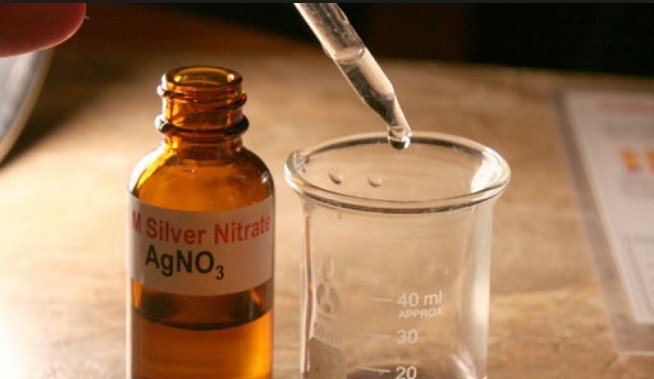
First (translated) publication at my Publish0x blog
Have you ever imagined while eating some exotic fruit that you have some tools to synthesize Silver Nanoparticles? If you are interested on that, let me invite you to keep reading these lines 😉
First things first, is not some kind of spontaneous generation that produces this particles, but it is quite possible to use certain fruity mixtures and extracts to make this kind of particles (at a laboratory level of course, always remember that ⚗️).
We need basically two things:
Natural extracts, came from seeds or leafs, either fig, jack fruit or pomegranate.

Silver nitrate, whose formula is AgNO3

There is a third ingredient, some radiation source, either natural or artificial, it's up to you.
Now it's just about mix and stir the previous ingredients into a beaker, wait a little bit, radiate the sample if you wish and voilá, we have our nanoparticles
But you maybe are wondering two things
How did the nanoparticles come out?
And... what do we need Silver nanoparticles?
Don't worry, I'm here to rescue you with those two questions (if are the ones you ask, if not, I apologize for my lack of psychic skills 😔)
Nanoparticles Synthesis
I'm not going to get too much technical here, well, maybe, I don't know, I'll try to keep it simple for you.
To make these nanoparticles we need the metal precursor and some reducing agent. In this case our precursor is the salt AgNO3, which contains silver, Ag, in its Oxidation State 1+, but we need Ag with its null oxidation state (0) so we can have the "true" silver and not a cationic one. Remember, oxidation states tell us about the electronic structure of the chemical species, and metallic silver is "0"
Our reducing agent is going to be the mixture of those natural extracts, since they contain flavonoids, polyols, actinoids, polysacharides, among others with fancy names. This compounds have the capacity to tell silver to get down from 1+ and get to 0, helping us in our nanotarget
Use of the nanoparticles
By the way, we the chemists are a little bit eccentric and we like to put weird names or abbreviations to the world and its things, so the mortals get afraid of us... just kidding, we are kind of lazy 👨🔬👩🔬 so to refer to the Silver Nanoparticles we rather use AgNPs, but what is the purpose of them?
AgNPs can be used in biosensors, electronic products, superconductors, and, specially, in medical applications due to their antimicrobial properties. They are tiny but powerful.
Besides, this type of synthesis seeks for a more green and ecological technique that normally use reducing agents that represent environmental and health threads, like borhydrides. This way, we can be more ecofriendly in out goal of manipulating the nanoworld
Hope you like this post, the articles that I read to make it are right here below if you are interested on this subject
If you like NANO things then you are going to love this two NANO faucets:
https://www.freenanofaucet.com/faucet
Just download the NATRIUM wallet on your phone, put your address and voilá, free NANO for you! (No referral links)
If you want and like to contribute to my science and crypto (and both) content, any donation is well received 😇😇
MY COINTREE LINK: cointr.ee/mabc95
THANKS IN ADVANCE!!!
Posted Using LeoFinance Beta
yeah science
Posted Using LeoFinance Beta
Would this reaction fall under organic chemistry, or is it still part of physical?
Could be inorganic, but in general reactions only care about electrons hehe ;)
Posted Using LeoFinance Beta
Just FYI, I think your post is more suited for the STEM community.
You can use the https://stemgeeks.net frontend for all STEM-related posts. You can earn more
STEMtokens that way.